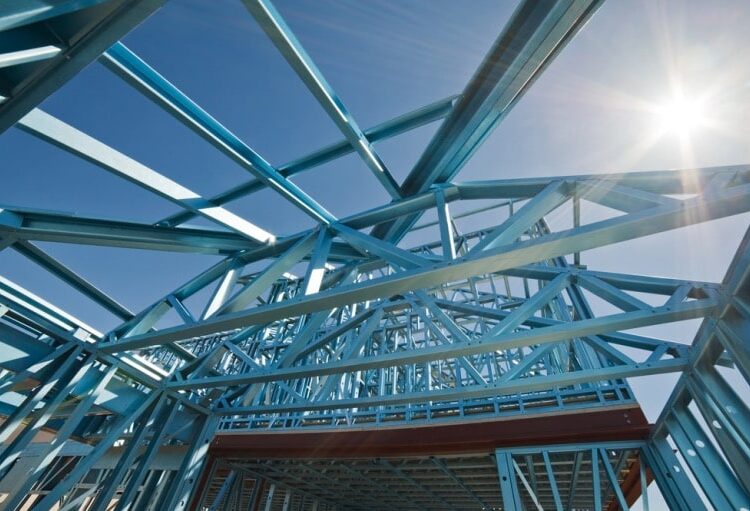Steel has long been a cornerstone in construction, and it is known for its strength and versatility. As the world moves toward sustainable practices, it remains a critical material with the potential to align with green building goals. The future of steel in sustainable construction lies in its adaptability and innovation within eco-friendly frameworks. If you’re interested in learning more, you can click here to see the website.
Recent advancements demonstrate how steel can be produced with reduced carbon emissions. Innovations in manufacturing processes aim to make steel more recyclable and energy-efficient, aligning with the pressing need for efficient resource utilization. This evolution is essential for meeting the demands of environmentally sensitive construction projects.
Experts predict that steel will maintain its significance in the industry as it evolves toward a more sustainable future. Its enduring attributes, coupled with ongoing technological advancements, promise to support the development of eco-friendly infrastructure without compromising on quality or durability.
Innovations in Steel Production
Recent advancements in steel production focus on sustainable practices. Efforts include developing greener steelmaking processes, enhancing recycling initiatives, and improving alloy compositions. These innovations aim to reduce environmental impact and enhance the performance of steel in construction.
Green Steelmaking Processes
Green steelmaking prioritizes reducing carbon emissions by utilizing alternative fuels and energy sources. Hydrogen-based reduction and electric arc furnaces are key technologies being developed. Hydrogen-based methods replace carbon sources with hydrogen, minimizing CO2 output. Electric arc furnaces use electricity to melt scrap steel, reducing reliance on coal.
Countries and companies worldwide invest heavily in these technologies, indicating a shift towards cleaner manufacturing methods. The adoption of renewable energy sources in steel production plays a crucial role in achieving sustainability goals. The integration of these approaches contributes to a reduced carbon footprint for the steel industry.
Recycling and Circular Economy
Recycling in steel production involves repurposing scrap steel, reducing the need for virgin raw materials. This practice conserves energy and reduces landfill waste. Steel is inherently recyclable without loss of quality, making it an ideal material for a circular economy.
Collection and sorting advancements have improved the efficiency of recycling processes. Companies are investing in innovative sorting technologies, enhancing recovery rates of high-quality scrap. Increased collaboration among stakeholders supports the development of closed-loop systems, aiming to keep steel products in circulation for longer periods.
Advancements in Alloy Composition
Advancing alloy composition enhances steel’s properties, such as strength, flexibility, and corrosion resistance. By adjusting the elements used, manufacturers tailor steel to specific requirements. High-strength, low-alloy steels (HSLA) are gaining popularity for their improved structural capabilities and lighter weight.
Alloy development often involves incorporating elements like manganese, chromium, and nickel in precise amounts. This customization enhances performance while maintaining sustainability. Research into nanostructured alloys offers potential breakthroughs in durability and efficiency. These advancements support construction projects’ demands for advanced, eco-friendly materials.
Implementation in Construction
The integration of steel in sustainable construction hinges on innovative design, supportive regulations, and proven examples of success. Each aspect plays a pivotal role in advancing steel as a cornerstone of eco-friendly building practices.
Designing for Sustainability
Sustainable design using steel focuses on reducing environmental impact while maximizing efficiency. Architects utilize high-strength, low-weight steel to minimize material use and waste. The modular nature of steel allows for easy disassembly, reducing demolition waste.
Incorporating recyclable materials is essential. 98% of structural steel is recyclable, significantly decreasing construction waste. Using steel with improved thermal performance boosts energy efficiency in buildings, contributing to reduced emissions. Additionally, steel’s durability enhances building lifespan, meaning less frequent need for resource-intensive renovations.
Regulatory Frameworks and Incentives
Governments play a crucial role by establishing frameworks that promote the use of sustainable materials. Regulations often require buildings to meet specific energy standards, where steel’s attributes support compliance. Tax incentives and subsidies can further encourage sustainable practices.
Certification systems like LEED recognize and reward sustainable construction, often mandating or encouraging steel use. Builders who comply benefit from financial and reputational advantages. Policymakers focus on minimizing carbon footprints through stringent environmental mandates, with steel’s recyclability playing a vital role.
Case Studies of Sustainable Steel Structures
Examining successful projects showcases steel’s potential in sustainable construction. The Bullitt Center in Seattle exemplifies eco-friendly design through its six-story steel structure, yielding an 83% recycling rate. Known as the “greenest commercial building,” it utilizes steel for its structural efficiency.
Another example is London’s Gherkin Building, which demonstrates reduced energy usage via innovative design and sustainable materials. Its steel frame supports glazing that enhances natural light, cutting down electricity needs. These examples highlight steel’s adaptability, proving it can meet diverse architectural and environmental standards worldwide. They reinforce steel’s status as a versatile, sustainable choice in modern construction.




